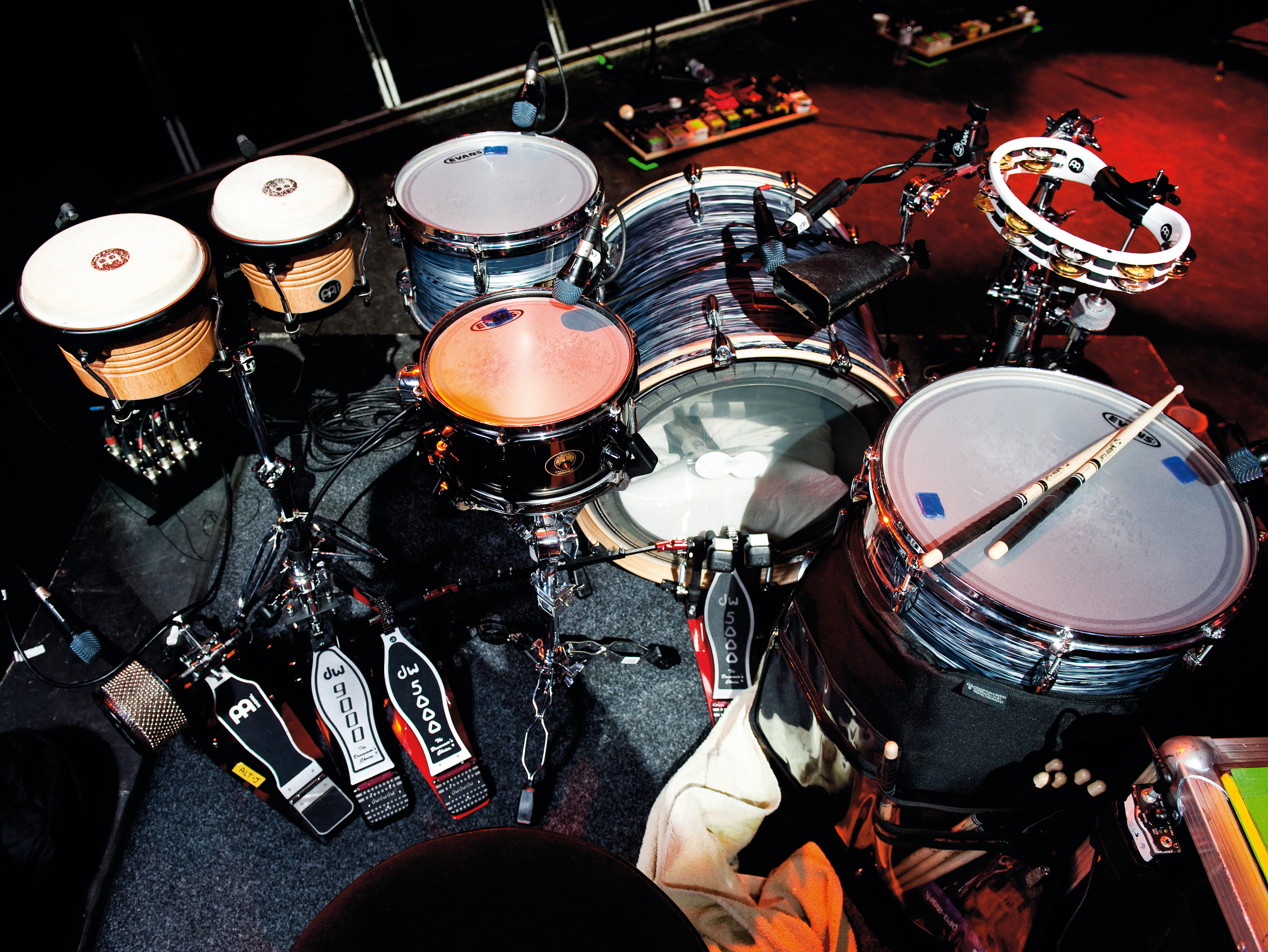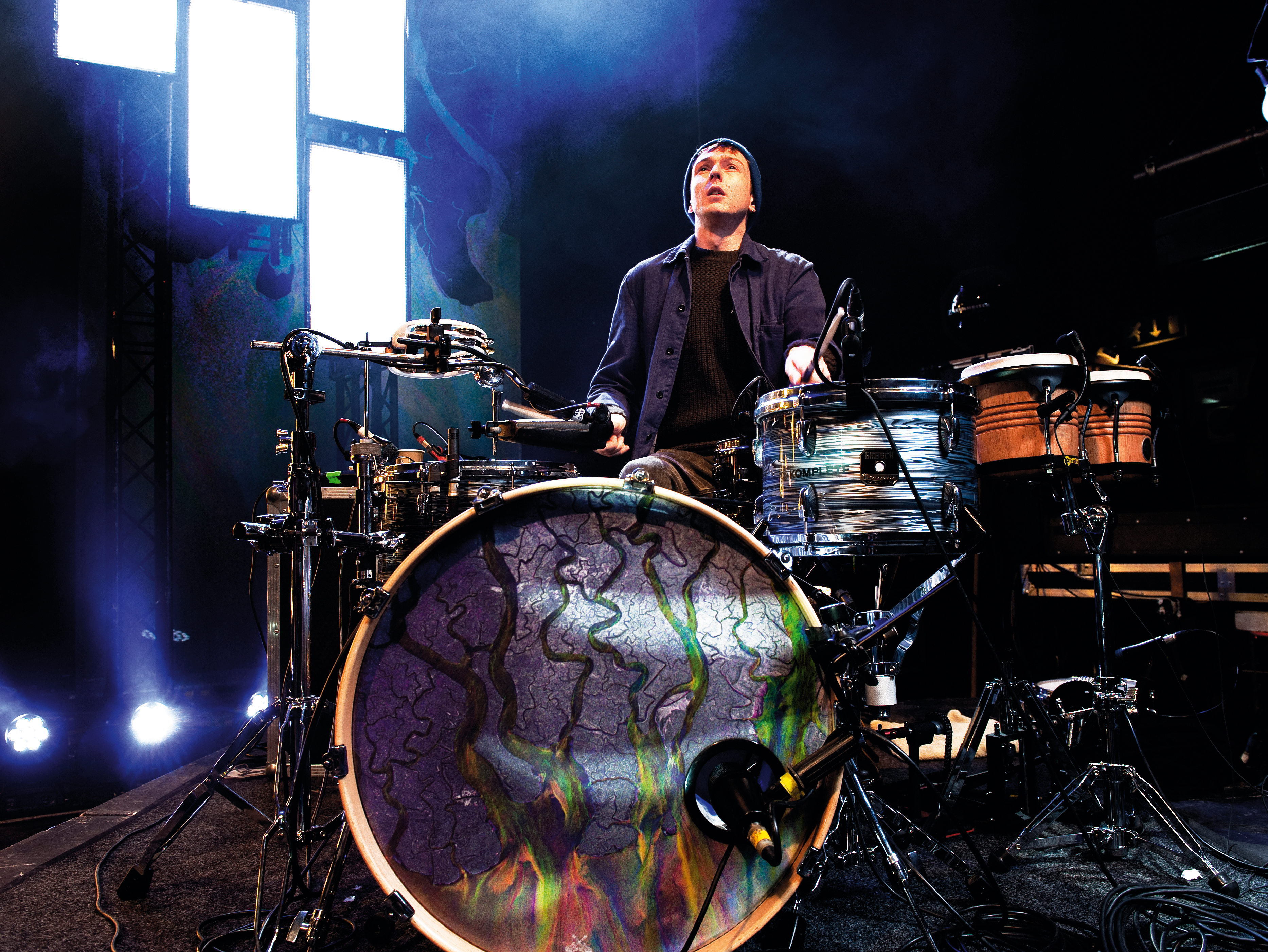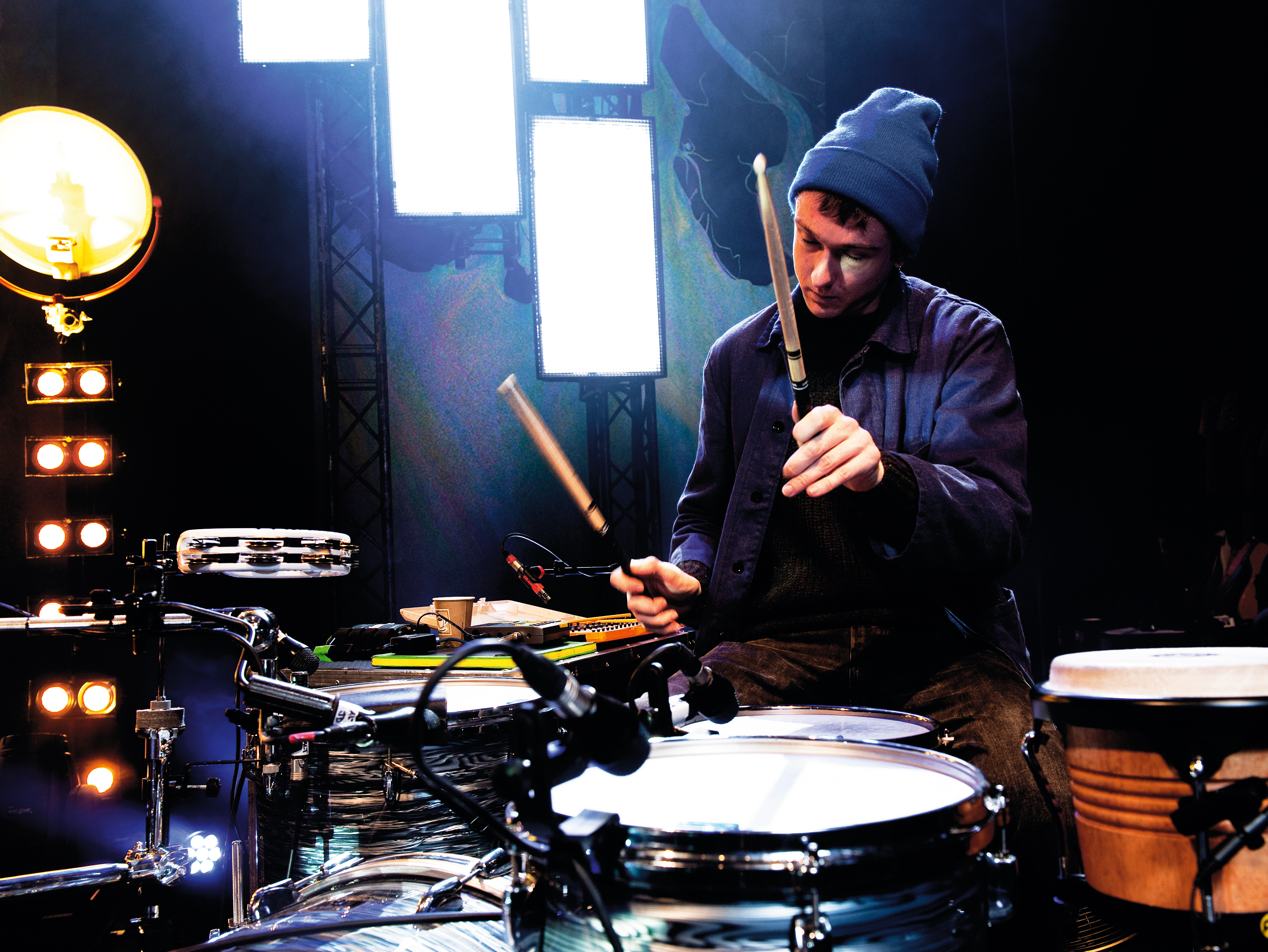Thom Green's Alt-J drum setup in pictures
The Mercury Prize-winning drummer talks us through his cymbal free kit

Thom Green's Alt-J drum setup in pictures
As a child, Thom Green fit the classic mould of the future drummer, banging on pots and pans, hungry to get his hands on a real kit.
Now, playing with the Mercury Prize-winning Alt-J, Thom is anything but classically minded in his approach to his chosen instrument.
There are no cymbals in his set-up and the beats he creates for the band show the influence of electronic music even as Thom plays them on an acoustic kit.
Last year was a momentous year for the young group. With the release of their award-winning debut album and an increasingly intense touring schedule, they have come a long way very fast from the band that formed at university in Leeds.
“We met in 2007 in the first year of university,” says Thom. “We didn’t start making music together until the second year, 2008, and then we were studying so we weren’t actively making an album.
“The album was recorded over a few years whenever we had time to go to London and see our producer. Even then we weren’t thinking, ‘this is an album track.’ We weren’t looking to get signed or even to play gigs. We just liked making music and had the opportunity to record.
“We accumulated tracks over the years and then we signed and we had these tracks. The album already kind of existed so really, we spent a couple of months recording all together, going down there for a weekend at a time to get a track done in two days.”
Rhythm Magazine recently caught up with Green to check out his unique set-up and discuss his influences, drumming history and more. Here we bring you pictures of his kit, along with excerpts from that interview, which you can read in full in the May issue of Rhythm (issue 215.) Alternatively, you can subscribe to Rhythm for a monthly dose of drummer interviews, gear reviews, news and more.
- Find your next setup with our guide to the best drum kits
Next: the kit...

The kit
Gretsch Renown Maple: 22x18-inch kick drum; 12x8-inch rack tom; 16x16-inch floor tom; 10x5 1⁄2-inch Mapex Black Panther snare
Thom on the influences behind his unusual setup
“I think Abe Cunningham [Deftones] is my biggest influence. His playing is unique and it has flair but it’s very solid.
“I started copying his set-up. Then I got obsessed with Travis Barker and Blink-182 and his set-up, having everything flat. I do that. I’ve got used to it and I think it’s easier. The drums sound better as well.
“Apparently it is harder on your arms. You’ve got to hit them harder when the drums are flat like that and it doesn’t rebound back as easily. But I don’t mind. I love having it all flat.
“Today I got my new bongo stand. Before, it was really tall and the bongos would only go on at an angle so I could hit them. Now I’ve got them on a small stand so it looks amazing; it looks like a DJ, like it’s your platform.
“I don’t like anything at angles, it’s weird. Everything has to be parallel and uniform. It really winds me up if there is anything on the riser that shouldn’t be there, like a jacket.”

Plus...
Meinl Foot Cabasa, Meinl tambourine, Meinl cowbell, Meinl bongos, DW 9000 Series hardware, DW 5000 Series double pedal, Pro-Mark 5A Nylon Tip Oak sticks, Porter & Davies BC2 stool, Evans EC2 on toms and snare, Remo Powerstroke Clear on kick
On his lack of cymbals
“When I was growing up, I played cymbals. I had a Sabian starter pack for 10 years. I was playing in metal bands at home, it was all very heavy, I loved it.
“Then I went to uni in Leeds, I started playing with these guys. We were playing in a bedroom, we had so little room that originally I had just a snare drum. Then I brought my bass drum from home and I was using those.
“For a hi-hat I used a saucepan that I turned upside-down and tied to my leg. The pan worked - it had the right sound and that’s actually on the album.
“It was mounted onto a boom stand. I couldn’t use it live anymore because it wouldn’t stay still. It was a nightmare, so I got a cowbell and that’s packed with newspaper so it doesn’t have much resonance.”

Writing drum parts
Thom on his approach to crafting drum parts
“When we’re writing and I’m playing the drums, I play what I think sounds good, what feels good straightaway and then I try to figure out how to make it as unique as possible without going completely off the wall.”
“It has to be coherent but it’s hard to describe how I do it. You just keep trying until you get something that works and is unique.
“We all have input on each other’s parts. We’ve learned that you have to put your ego aside for the benefit of the track, you have to forget about the fact that you might not be playing until halfway through the song. You’ve got to compromise.
“It is hard but I’ve learned that it works with everyone working together. Now I’ve got a lot better just from touring so much, I’m a lot more confident. I seem to know what works better and I seem to know what the other guys like better as well. I’m less scatty, it’s a bit more professional now.”
Now check out Rhythm’s current Issue 216 for an interview with rock icon Ilan Rubin. Or subscribe to Rhythm here for a monthly dose of new gear reviews, kit buying guides, pro drum lessons and all-star interviews.
Liked this? Now read: Drum kits of the pros: stars' live and studio drum setups in pictures